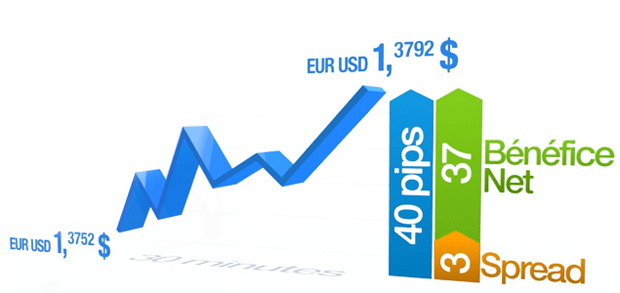
Dividend stocks are a great way of increasing your wealth and making your money grow faster than ever. Dividend stocks pay a percentage of the company's profits. Dividend stocks are available through a stock broker, or directly through the company. You can also buy dividend stocks via a stock broker or directly through the company. This is a general term that refers to stocks that are cheaper than their cost. However, you should weigh the pros and cons before you jump into buying dividend stocks on margin.
The first step in buying dividend stocks is choosing the right broker. Brokerage firms have their own set of rules and regulations. You must ensure that you have sufficient funds to cover your maintenance margin if you plan to purchase dividend stocks on margin. If you have less than this amount, your account may be subject to margin calls, liquidation of your securities, and increased interest rates.

Dividend screeners, another method to buy dividend stock is to use them. These software tools scan the market to find dividend-paying stocks and display which match your criteria. A variety of online dividend screeners are available, including apps and websites. The best dividend screener is AvaTrade, which has been in business since 2006. It offers a variety of features and has a relatively low minimum deposit. eToro can be viewed as well. It offers low minimum deposits and a variety features, including apps as well websites.
You can also buy dividend stock by reinvesting profits. This is an affordable way to increase the number shares in your portfolio. It's also a great method to diversify your portfolio. Some companies may also have progressive dividend strategies which allow them to increase the amount that they pay each year.
Checking out the price vs dividend comparison is the first step in buying dividend stocks. The market and industry where dividend yields are measured vary. A good dividend yield is at least two percent. It can be difficult to choose the best stock for your needs. However, it is possible to do some research and make an educated decision.
A reputable investment portal is the best place to purchase dividend stocks. These websites include a section that reviews dividend stocks. This is helpful in deciding which ones you should invest in. You can also use historical data to determine which companies have a track record of paying dividends.

A brokerage firm can help you buy the best dividend stocks if you are not able to research them yourself. Brokerage firms are reputable and have a lot of credibility in the financial market. You can choose from a variety of companies and you can even set up an account online.
FAQ
What is an REIT?
A real-estate investment trust (REIT), a company that owns income-producing assets such as shopping centers, office buildings and hotels, industrial parks, and other buildings is called a REIT. They are publicly traded companies which pay dividends to shareholders rather than corporate taxes.
They are similar companies, but they own only property and do not manufacture goods.
What is the difference of a broker versus a financial adviser?
Brokers help individuals and businesses purchase and sell securities. They handle all paperwork.
Financial advisors are specialists in personal finance. Financial advisors use their knowledge to help clients plan and prepare for financial emergencies and reach their financial goals.
Banks, insurance companies and other institutions may employ financial advisors. They may also work as independent professionals for a fee.
Take classes in accounting, marketing, and finance if you're looking to get a job in the financial industry. You'll also need to know about the different types of investments available.
How are share prices established?
Investors set the share price because they want to earn a return on their investment. They want to make money from the company. They buy shares at a fixed price. Investors will earn more if the share prices rise. If the share value falls, the investor loses his money.
An investor's main objective is to make as many dollars as possible. This is why they invest in companies. This allows them to make a lot of money.
Statistics
- For instance, an individual or entity that owns 100,000 shares of a company with one million outstanding shares would have a 10% ownership stake. (investopedia.com)
- The S&P 500 has grown about 10.5% per year since its establishment in the 1920s. (investopedia.com)
- Our focus on Main Street investors reflects the fact that American households own $38 trillion worth of equities, more than 59 percent of the U.S. equity market either directly or indirectly through mutual funds, retirement accounts, and other investments. (sec.gov)
- "If all of your money's in one stock, you could potentially lose 50% of it overnight," Moore says. (nerdwallet.com)
External Links
How To
How to create a trading strategy
A trading plan helps you manage your money effectively. This allows you to see how much money you have and what your goals might be.
Before you begin a trading account, you need to think about your goals. You may wish to save money, earn interest, or spend less. If you're saving money you might choose to invest in bonds and shares. If you're earning interest, you could put some into a savings account or buy a house. You might also want to save money by going on vacation or buying yourself something nice.
Once you decide what you want to do, you'll need a starting point. It depends on where you live, and whether or not you have debts. It is also important to calculate how much you earn each week (or month). Income is the sum of all your earnings after taxes.
Next, you need to make sure that you have enough money to cover your expenses. These include rent, bills, food, travel expenses, and everything else that you might need to pay. All these things add up to your total monthly expenditure.
Finally, you'll need to figure out how much you have left over at the end of the month. That's your net disposable income.
Now you've got everything you need to work out how to use your money most efficiently.
To get started, you can download one on the internet. You could also ask someone who is familiar with investing to guide you in building one.
Here's an example spreadsheet that you can open with Microsoft Excel.
This will show all of your income and expenses so far. It includes your current bank account balance and your investment portfolio.
Here's an additional example. This was created by an accountant.
It shows you how to calculate the amount of risk you can afford to take.
Remember: don't try to predict the future. Instead, think about how you can make your money work for you today.